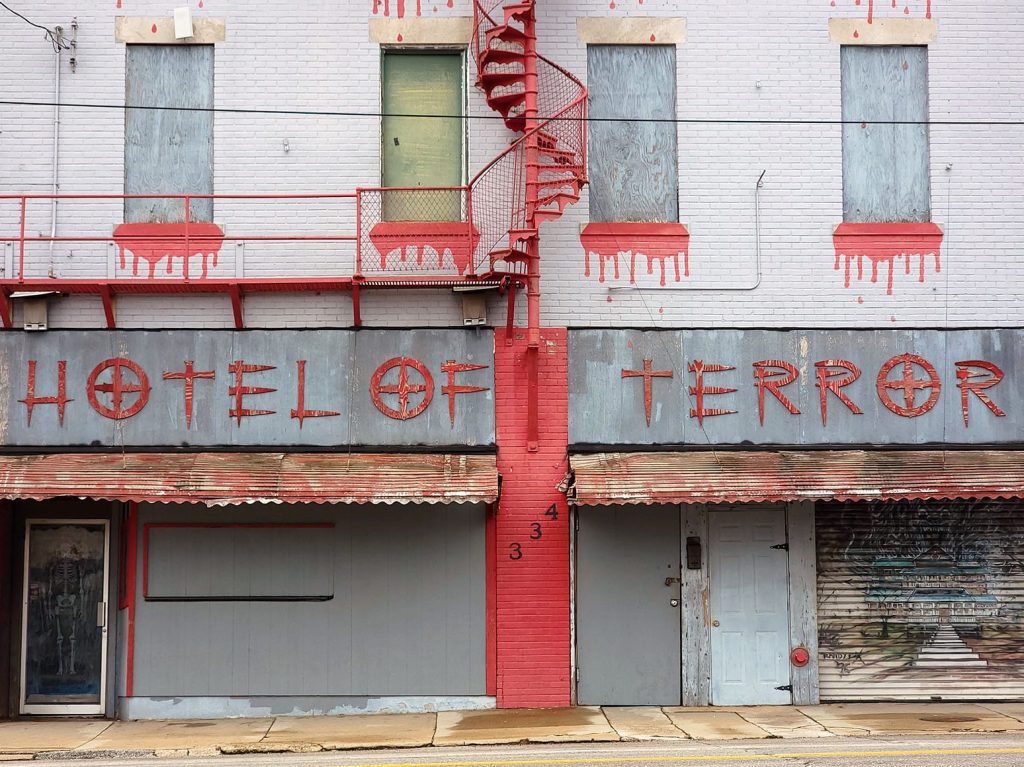It’s not the headline from a made up newspaper in a fictitious town in a campy Halloween slasher flick, it’s for real. The Springfield City Council could impose eminent domain to take over and take down the Hotel of Terror.
Could it be forever haunted by the decision?
Sterling Mathis is the owner of the Hotel of Terror, a haunted house attraction at 334 North Main Avenue. While Halloween fun is his trade, he’s serious about the business he’s built over the past 45 years.
“That’s what I love to do,” Mathis said. “I love building stuff that scares people. It’s fun, it’s safe, it’s a good time.”
Mathis has a full-time job in sales, but has operated the Hotel of Terror on Main Street in downtown Springfield since 1978. The building is the subject to an eminent domain bill up for the Springfield City Council’s consideration. On Feb. 6, Mathis asked the City Council to table the eminent domain bill to a later date to buy more time for negotiation and to get a higher buying price from the City of Springfield.
What does the creek have to do with the haunted house?
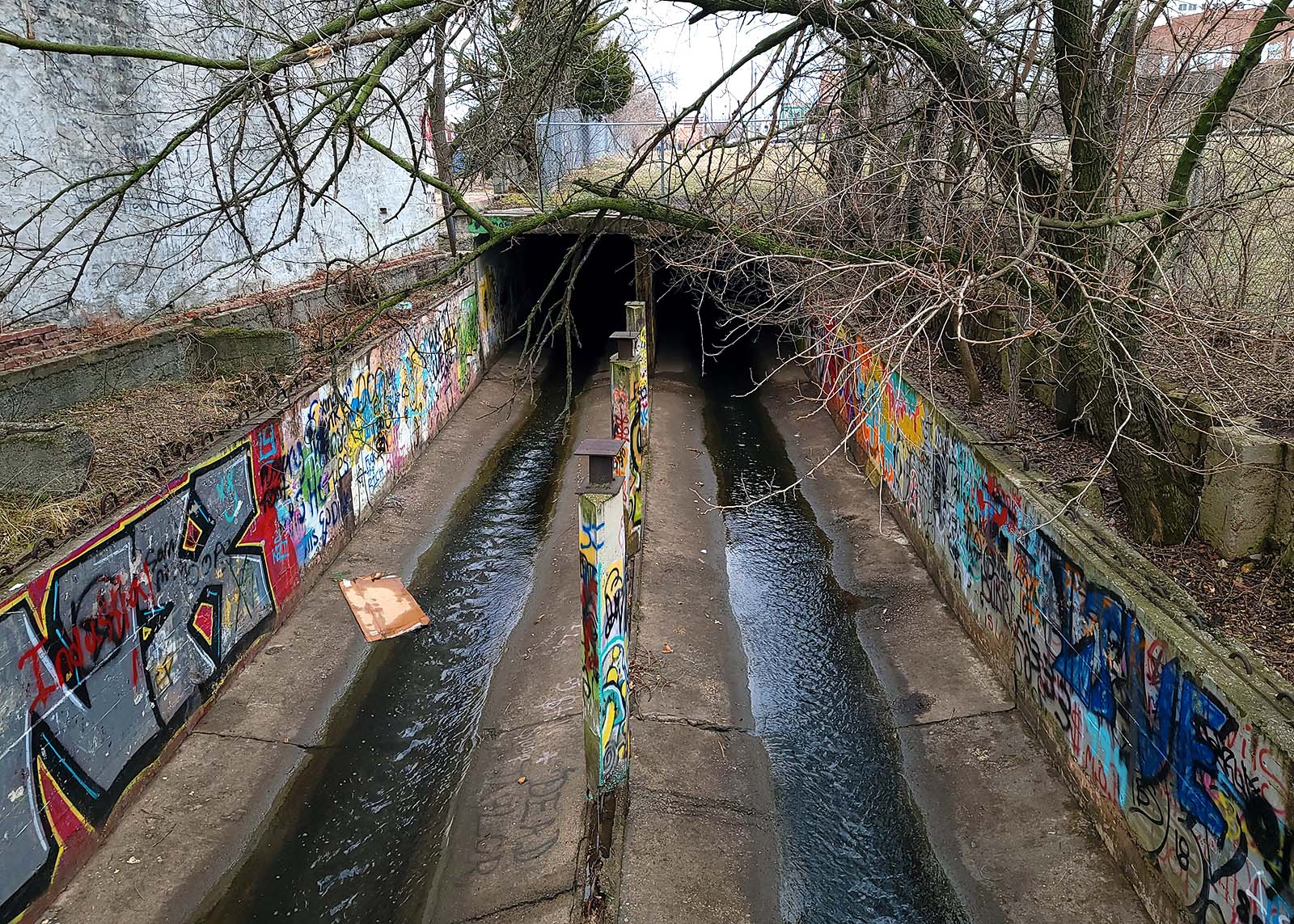
Development of parks, trails and greenspaces are key components of the Forward SGF plan for Springfield’s growth and development from now until 2040. The Jordan Creek daylighting project is intended to create a connection between three public park spaces around downtown Springfield that will be developed into destinations.
The City of Springfield owns all of the surrounding land on the east side of Main Street, except for the haunted house, which was built in 1915 and operated as an actual hotel. According to the Greene County Assessor’s Office records, the building is 8,938 square feet.
“I’m not opposed to moving, I have property,” Mathis said. “We’ve been doing this for a long time. I don’t mind moving. The problem is I can’t do it for half of what they’re telling me I’m going to have to take or they’re going to take my property.”
Haunted house owner rejected buyouts
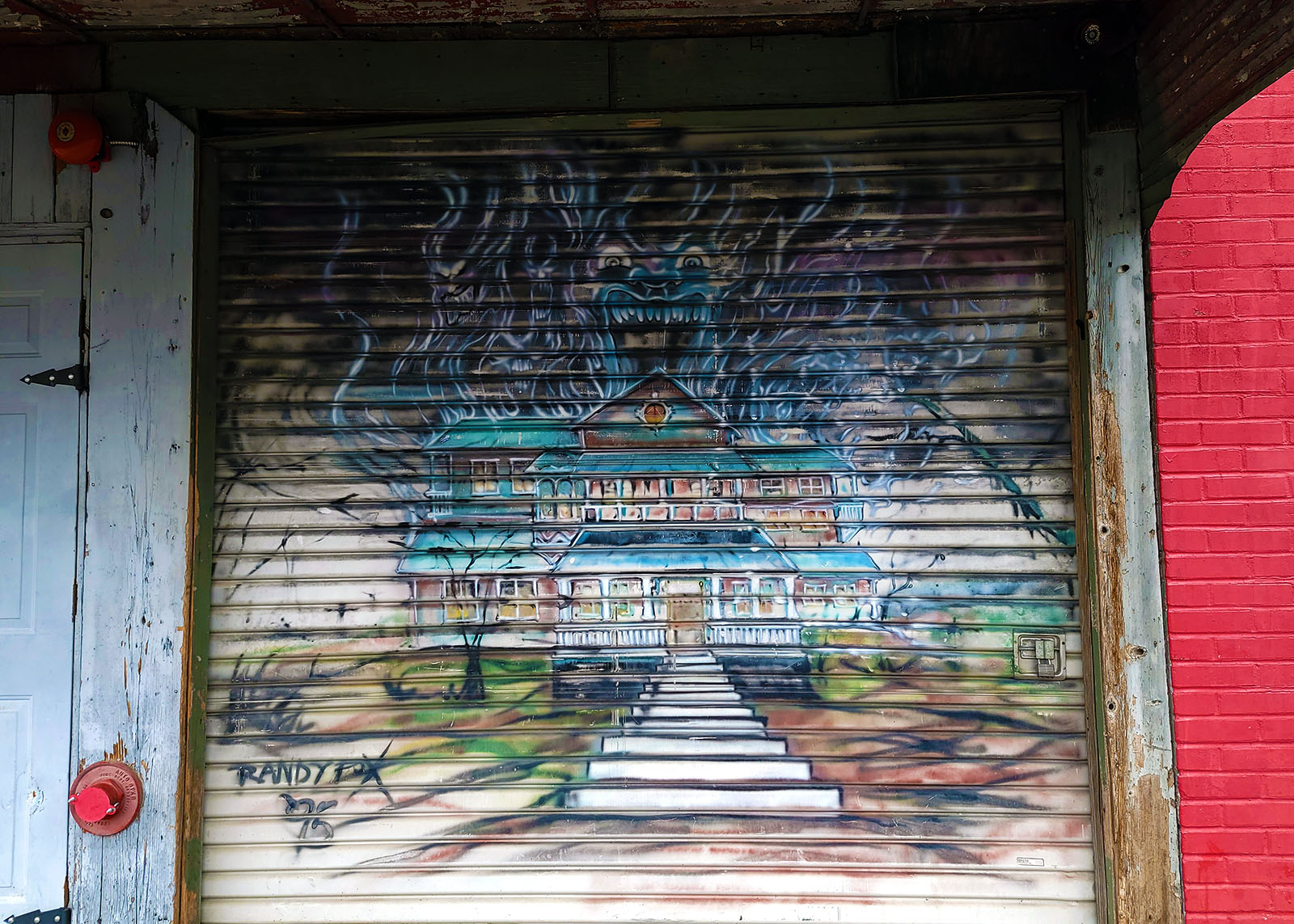
Mathis owns a second seasonal haunted house. Dungeons of Doom is located at North Grant Avenue and West Wall Street. He said the City of Springfield made an initial offer to buy the Hotel of Terror that was not close to its value.
“They talk about making estimates or bids on my property; I couldn’t buy two vehicles with what they offered me in 2019,” Mathis said.
Mathis said the last offer he got from the city would cover less than half of his moving and remodeling expenses to turn one attraction into two at the Dungeons of Doom site. It’s in part because haunted house construction is so specialized, and attractions are generally purpose-built.
“There’s like a handful of people in the country that can build haunted houses,” Mathis said, comparing the builders to surgeons. “There’s more people that can take appendixes out than build haunted houses.”
Hotel sits in Jordan Creek daylighting project area
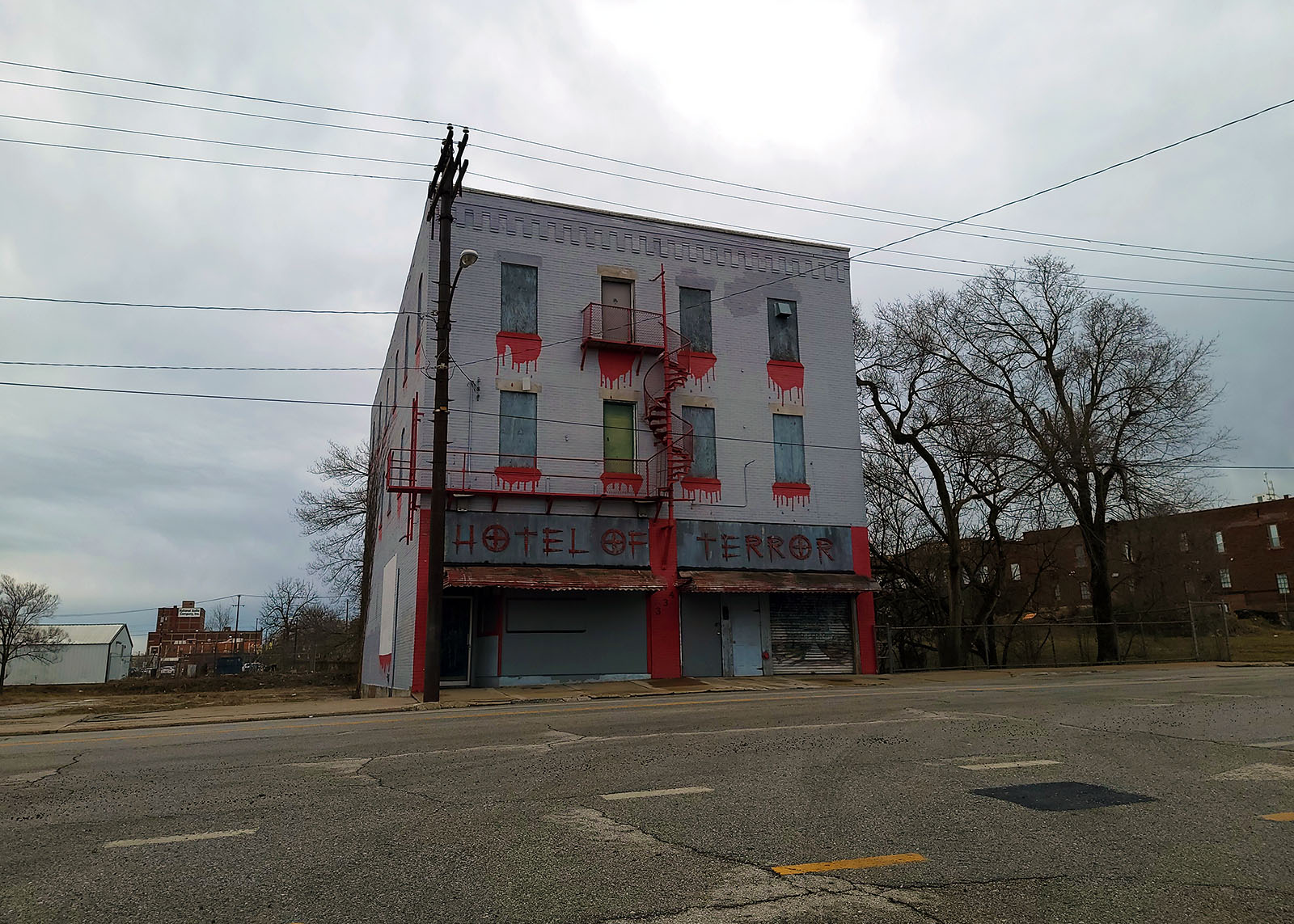
Chris Dunaway, principal engineer for the Springfield Department of Public Works, explained the building is needed to build a new bridge to carry Main Avenue over Jordan Creek by the spring of 2024.
“Due to the close proximity of the building to the bridge, it is impractical to even replace this bridge in kind,” Dunaway said.
The Main Avenue bridge has been deemed structurally deficient, and vehicles weighing more than 10 tons are restricted from using it. This, Dunaway said, stops City Utilities buses from using the bridge, even though it is close to the downtown bus transfer station off West Olive Street between Grant Avenue and Main Avenue.
As it is built, Dunaway said, the bridge is a public safety hazard.
“The bridge is also too small, resulting in periodic flooding over Main Avenue,” Dunaway said.
The new bridge is to be paid for through a combination of sources, including Springfield’s level property tax, its ¼-cent capital improvement sales tax, its ⅛-cent transportation sales tax, and any green infrastructure or transportation grants the Department of Public Works can secure.
If the City Council votes to move ahead with condemning the Hotel of Terror for eminent domain acquisition, Dunaway said it is still possible for the city to negotiate with Mathis. Mathis could also take the case to court.
Placemaking on the banks of Jordan Creek
In November 2019, the Springfield City Council looked at preliminary concepts for a plan to turn part of Jordan Creek into a community space. “Daylighting” is a term for opening up underground streams and/or restoring the stream to a more natural condition.
The Jordan Creek daylighting project is a plan to unearth the underground section of the creek downtown, which proponents say will reduce flooding risks, improve water quality and create an outdoor greenspace for the community to enjoy, which will then spur economic growth downtown.
The primary Jordan Creek site would have open lawn space, historical markers, public art, furnishings and gateways to nearby trails and greenways. It would be able to host events, concerts, outdoor classes, pop-up retail shopping and food trucks and opportunities for access to the creek.
The concept is to turn all of the downtown area along Jordan Creek into a place that people will want to be.
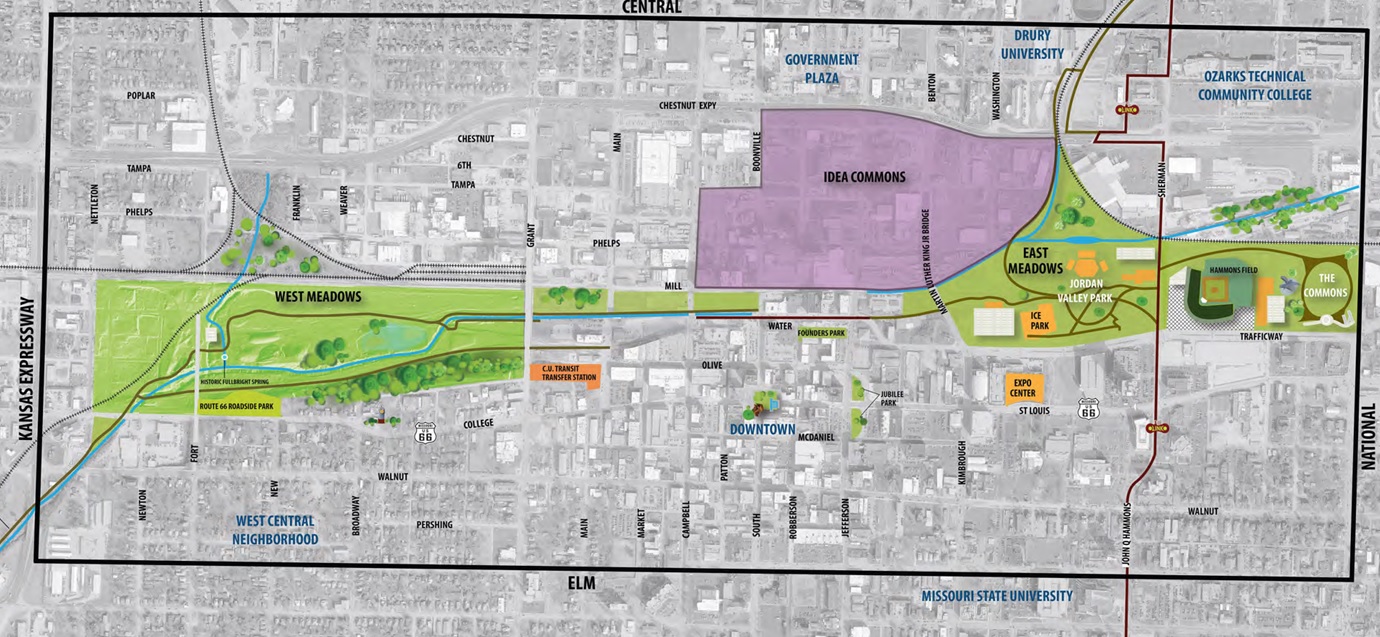
Eminent domain in Springfield’s charter
Article 2 of the Springfield City Charter spells out the City Council’s powers and authorities. It includes a clause to make public improvements and “acquire, by condemnation or otherwise, property.”
Article 2 also specifies the power of eminent domain, that the City Council may, “condemn private property, real or personal, or any use therein for public use within or without the city.”
Article 29 of the Springfield City Charter, the “miscellaneous provisions” chapter, authorizes property to be condemned for the purposes of eminent domain acquisition.
All proceedings for the condemnation of property or in the exercise of the right of eminent domain shall be in accordance with the laws of the state now or hereafter applicable to cities of the second class, or with such laws as may be provided for constitutional charter cities,” the provision in the charter reads.
The Hotel of Terror eminent domain bill is scheduled to come up for a City Council vote Feb. 21.
